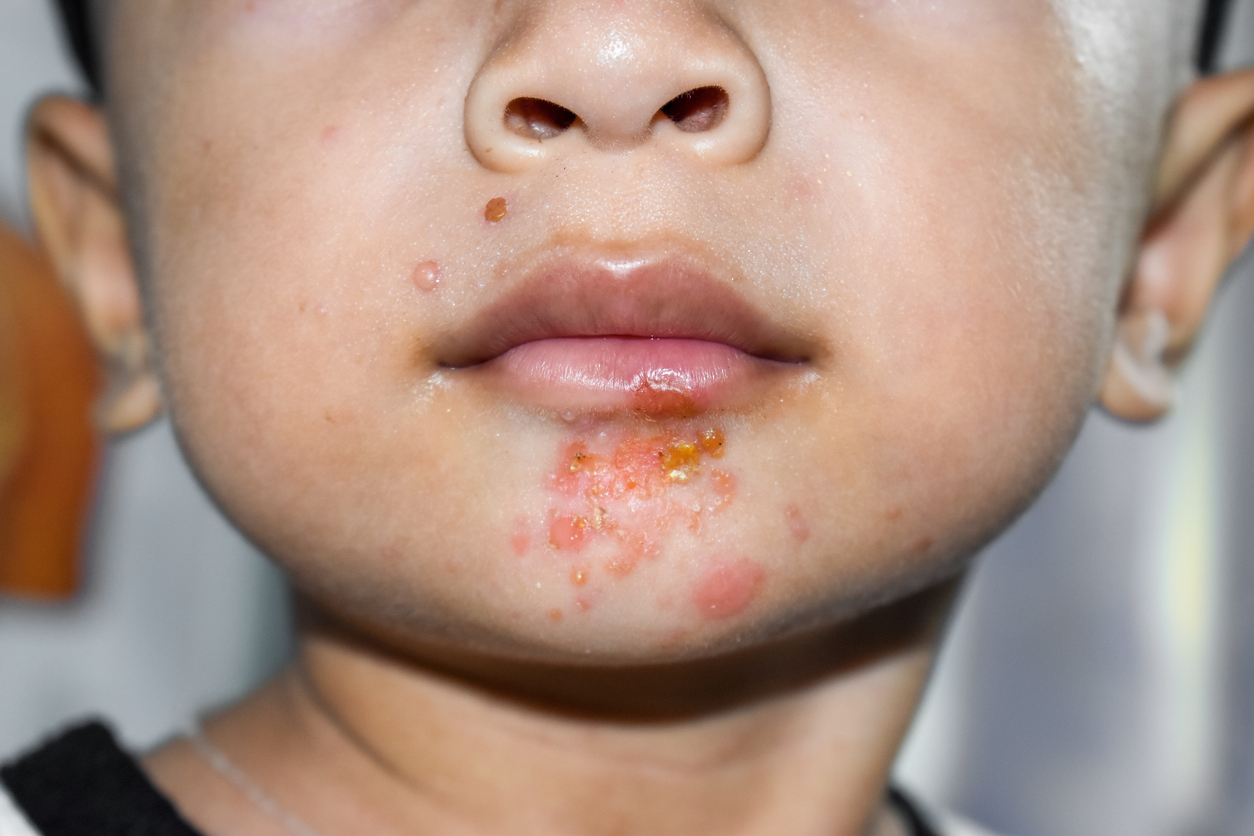2025-08-12
Ozenoxacin: the new weapon against impetigo
Dermatology and Venereology
By Ana Espino | Published on August 12, 2025 | 3 min read
Impetigo is a highly contagious bacterial skin infection, common in pediatrics but also affecting adults, particularly in situations of close contact or when the skin barrier is compromised. It most often presents as erythematous lesions covered with honey-colored crusts, located on the face, hands, or other exposed areas, and may be bullous or non-bullous. This condition is mainly caused by Staphylococcus aureus — including methicillin-resistant strains (MRSA) — and Streptococcus pyogenes. Beyond the physical discomfort and cosmetic concerns, impetigo has a notable psychosocial impact and contributes to rapid community transmission, particularly in school or family settings.
Current treatments primarily rely on the topical application of antibiotics (mupirocin, fusidic acid), sometimes combined with oral antibiotic therapy in extensive or complicated forms. However, the growing emergence of bacterial resistance to these agents is undermining their effectiveness, limiting available therapeutic options and complicating management. The challenge now lies in developing and making available treatments capable of maintaining high clinical and microbiological efficacy, while offering a good safety profile and reducing the risk of selecting resistant strains.
Against this backdrop, this study was initiated to evaluate the efficacy and safety of 1% ozenoxacin, a new non-fluorinated topical quinolone antibiotic active against S. aureus and S. pyogenes, including multidrug-resistant strains.
Can a small tube outperform the classics?
Three phase III randomized clinical trials, including a total of 756 patients — 377 treated with ozenoxacin and 379 in control groups — were selected. Participants, aged from two months to adulthood, had clinically confirmed bullous or non-bullous impetigo. Ozenoxacin 1% treatment was applied topically twice daily for 5 to 7 days. Two of the studies compared ozenoxacin with placebo, while a third compared it with 2% mupirocin.
Results show that ozenoxacin significantly improves the clinical success rate compared with placebo and nearly halves the risk of clinical failure. From a microbiological perspective, it offers a higher cure rate and markedly reduces the likelihood of treatment failure. When compared with mupirocin, its efficacy appears equivalent, although the precision of estimates is limited by small sample sizes. The safety profile is favorable, with adverse events being rare, mild — mainly erythema and pruritus — and comparable to those observed with standard treatments.
A future cornerstone in the fight against impetigo
Impetigo, a common and highly contagious skin infection, remains a therapeutic challenge in a context of steadily increasing resistance to topical antibiotics. Preserving effective and well-tolerated solutions is essential to limit transmission and ensure optimal management. This study aimed to evaluate and position 1% ozenoxacin as a credible therapeutic alternative to be integrated into the current arsenal. The results demonstrate that ozenoxacin offers clinical and microbiological efficacy comparable to mupirocin, while significantly outperforming placebo, and does so with an excellent safety profile. These findings support its potential use, particularly in contexts where mupirocin resistance undermines the effectiveness of standard treatments. However, the limited number of available studies and the small size of some samples call for caution in interpreting these results.
Larger clinical trials, including diverse patient profiles and different epidemiological contexts, will help confirm these findings, assess its potential role in bacterial decolonization, and define its place in international therapeutic guidelines.
Read next: Essential oils and skin: the synergy of plants and nanoscience
About the author – Ana Espino
PhD in Immunology, specialized in Virology

Last press reviews
Twice-yearly injections to change the game?

By Ana Espino | Published on December 3rd, 2025 | 3 min read
HIV & young people: what if we changed the rules?

By Ana Espino | Published on December 2nd, 2025 | 2 min read
